What is happening to the Immunity of the present-day Mothers? Report of a clearing-off in Maternal Measles Immunoglobulin G
This post is a report of my recent research on Maternal Measles Antibody (MMA) in Nigeria. The research was ignited as a result of the frequent cases of Measles outbreak in the country despite the routine immunization programs in different health centres around the country.
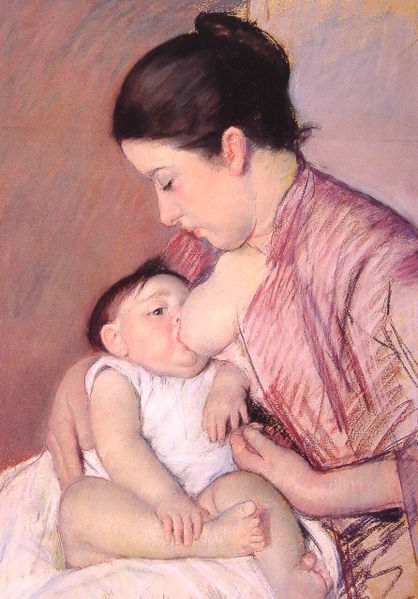
Woman breastfeeding her baby BY Mary Cassatt - CC BY 3.0, link
Though, the whole research evaluated the seroprevalence and seroconversion rate of maternally-derived measles antibody in mother-infant pairs; my intention in this post is to report the decline (below standard cut-off point) of immunoglobulin G, the only antibody of the human body that crosses the placenta from pregnant women to developing fetus.
Immunoglobulin G and its importance in humans
Immunoglobulin G is the most abundant natural human antibody released by the plasma B cells. It has 4 peptide chains consisting of two heavy (H) and two light (L) chains joined together by disulfide bond or a non-covalent bond
Unlike other immunoglobulin antibody, IgG immunoglobulin has the ability to penetrate extracellular and intracellular medium (as in pregnant women to fetus) conferring immunity via blood circulation to the fetus which later serve as protection against local and systemic infection to the new born baby at the first few months of life. Therefore, immunoglobulin G can be used as a biomarker in evaluating the immunity status of individuals.
In healthy individuals, Immunoglobulin G has a serum level of about 640-1350 mg/100mL, representing a total of 75% of all serum antibody. This gave it the upper hand over other antibody with diverse function such as;
● The elimination of pathogens through processes known as agglutination and opsonization
●Neutralization of body toxins by ingesting them
●Conferring innate immunity
●Seroconversion of infants following vaccination
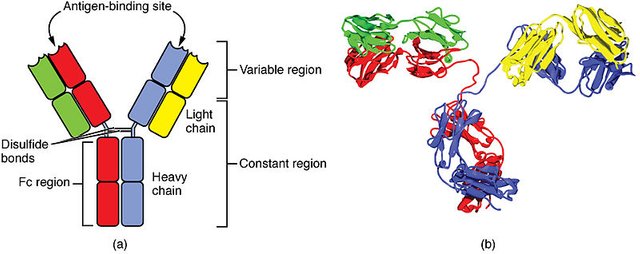
Four Chain Structure of a Generic Antibody-IgG2 Structures BY OpenStax College - CC BY 3.0, link
So, it is expected that a pregnant mother should have the adequate amount of IgG in order to transfer to their unborn child. When the antibody is naturally transferred, it should serve as an innate immunity before immunization is administered to such a child. In Nigeria, just like every other African countries, vaccination is administered to children as a public heath interventions that saves millions of children. Regarding Measles vaccination, the intention of health organizations on child immunization was that the natural immunity transferred from mother during pregnancy would be enough to protect the child till he reaches the age of 9 months after which the measles vaccine will be given.
Routine immunization is a strategy of administering preventable vaccines to children to prevent acute diseases. Apart from the fact that a child should still be enriched with adequate antibodies pending the time that the infant will be presented for immunization, routine immunization is a backup strategy to boost the immunity of a child against many diseases. Such diseases and vaccines administered in Nigeria are Tuberculosis (Bacilli Calmette- Guerin vaccine), Poliomyelitis (Oral/Injectable Polio Vaccine), Hepatitis B (Hepatitis B vaccine), Diptheria, Pertusis, Tetanus, Hib diseases (PENTA vaccine) etc. However, to give a clearer picture of immunization programs in Nigeria, below is the child immunization schedule as presented in the sampled Primary Health Centres, Nigeria.
.jpeg)
Infant immunization FROM Pixabay under Public domain
Measles is an infectious disease that resulted from measles virus. The virus is a pathogen that transmits measles through contacts with nose from an infected person or aerosols to another and is a major cause of death in children. Its symptoms include rash, cough, conjunctivitis, catarrh, koplik’s spot etc. Rash is developed in the child’s face or the neck while koplik’s spots is developed on oral mucosa of an infected child. However, complications developed are Pneumonia, dehydration, blindness, ear inflammation, reactivation of tuberculosis, encephalitis (brain infection) etc.
What did i look into?
Using the Enzyme Linked Immunosorbent Assay (ELISA) kit, I assessed the quantity of anti-measles virus IgG in nursing mothers and their 9 month old baby.
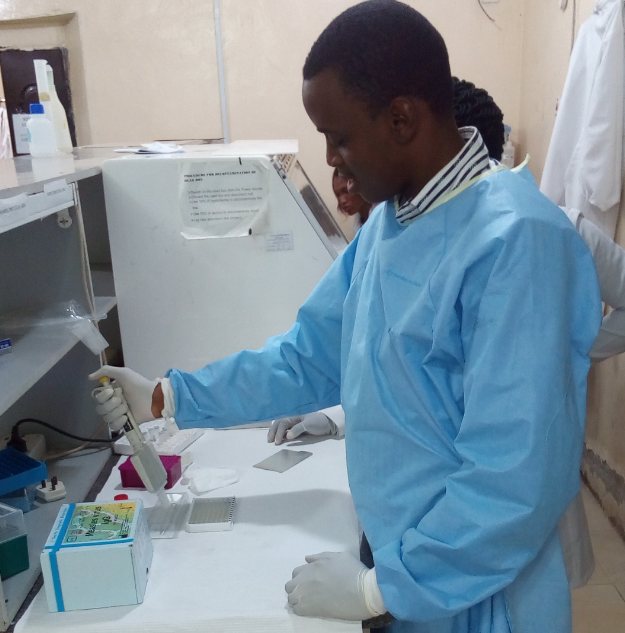
Laboratory work on MMA, 21/4/2018: Picture taken by me with a Samsung Galaxy Camera
Since I was aware that most mothers will present their babies in health centres to receive the nine month vaccination for measles, I used this opportunity to take the blood samples of both the mother and infant before immunization. However, in order to get an accurate result, I excluded caregivers that are not nursing mothers, nursing mothers that have already presented their infants for measles immunization and nursing mothers whose infants are older than 9 months of age.
After collecting the blood samples of both mother and infant on a whatman filter paper, I did the serum extractions which were later qualitatively assayed for anti-measles virus IgG antibodies. The measles immunoglobulin G was then measured with a recombinant haemagglutinin measles-enzyme-linked immunosorbent assay reader with a cut-off point set at 450nm and 450-650nm filter reading.
Outcome of the research
Results from the analysis showed that of the 184 blood samples (92 each) that were collected from the mothers and their infants, none of the mothers had detected immunoglobulin G antibody. The prevalence rate thereby showed that all blood samples from the mother and infants were all 0.00%.
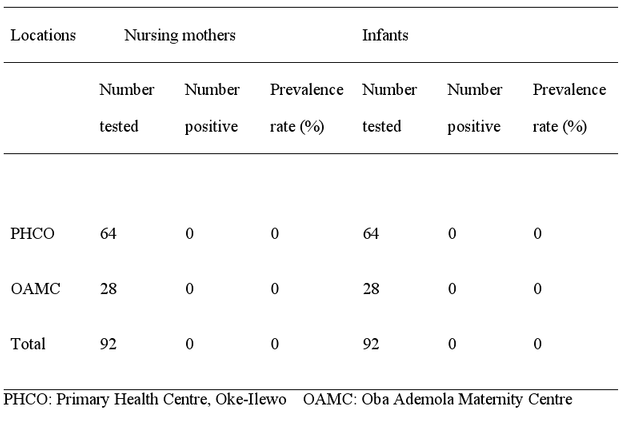
Result of Maternal Measles IgG Antibody among Mother-Infant Pairs
However, when the seroprevalence values were measured by subtracting the cut-off point value of measles immunoglobulin G from that of the mothers-infants pairs at 450nm and 450-650nm, the filter reading were far below the standard cut off with the highest ranging from 0.340 at 450 nm and 0.304 at 450-650nm. This means that all participating mothers were seronegative (100%) for anti-measles IgG antibody.
When the trends of maternal and infant antibody were assessed, it was observed that the measles antibody levels in mothers were all greater than that of their infants except in just 5 out of 92 mother-infant pairs.
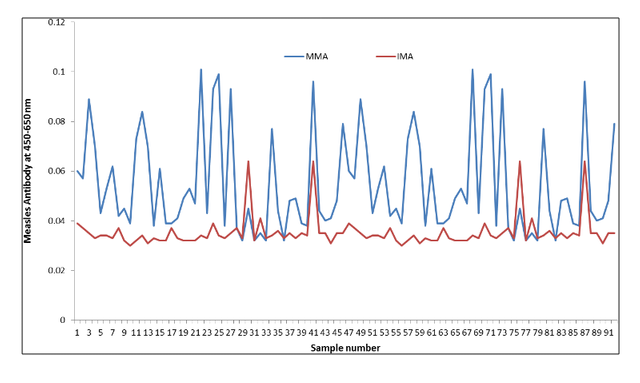
Graph showing Trends of Maternal and Infant Measles Antibody
Assessing the situation: What could have gone wrong?
It is very certain from this research that none of the mothers have detectable measles immunoglobulin G (IgG) antibody. This means that the inefficiency of the present day mothers to transfer their antibodies to their developing fetus during pregnancy in order to serve as a primary protection against infections in the early life of their infants is evident and should raise a public health concern.
However, result gotten from the mothers is a reflection of that of their infants as none of the corresponding infants has detectable immunoglobulin G antibody in their blood. This imply that the mothers did not transfer any immunoglobulin G antibody to their infant and therefore expose their new born baby to all forms of diseases (especially the wild-type measles) before being presented for the vaccination at 9 month of age.
Below is a video that explains the pathophysiology of measles, important clinical signs and symptoms, as well as treatment and prevention.
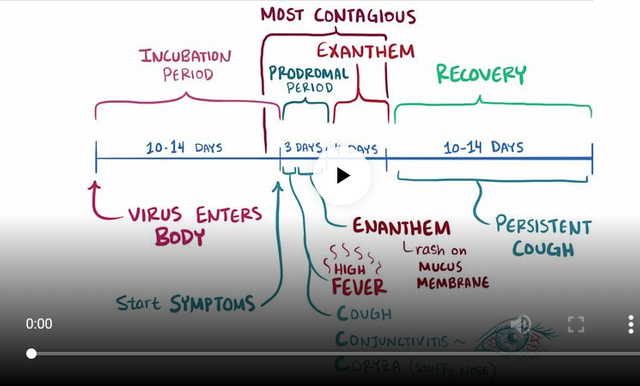
Watch the video on wikipedia commons through this link
The confirmatory study done to assess the color intensity of the immunoglobulin G in the nursing mothers’ blood also proved that all the 92 mothers and their corresponding infants were below the cut-off point, revealing a seronegative result for IgG. This infer that as at the time of the study, all the nursing mothers had no traces of anti-measles virus antibody in their blood stream, confirming either a decaying or clearing off from their infants before being presented for immunization.
Proposed Solution
● I wish to report that the routine administering of infants with measles immunization at 9 month old could be said to be no longer appropriate; hence, the need for its review.
I will propose that the infants be presented earlier to measles, mumps and rubella vaccination in order to protect them against possible exposure to wild-type diseases.
● A booster dose of vaccination should also be considered in areas with high morbidity and mortality rate.
● Exclusive breastfeeding should be encouraged among nursing mothers.
Thank you for Reading
All Images Used In This Article, Are Linked To The Respective Owners

| REFERENCES |
https://www.sciencedirect.com/topics/neuroscience/immunoglobulin-g
https://emedicine.medscape.com/article/136897-overview
https://en.m.wikipedia.org/wiki/Immunoglobulin_G
https://kidshealth.org/en/parents/test-immunoglobulins.html
https://www.cdc.gov/measles/about/complications.html

If you write STEM (Science, Technology, Engineering, and Mathematics) related posts, consider joining #steemSTEM on discord here. If you are from Nigeria, you may want to include the #stemng tag in your post. You can visit this blog by @stemng for more details. You can also check this blog post by @steemstem here and this guidelines here for help on how to be a member of @steemstem. Please also check this blog post from @steemstem on proper use of images devoid of copyright issues.
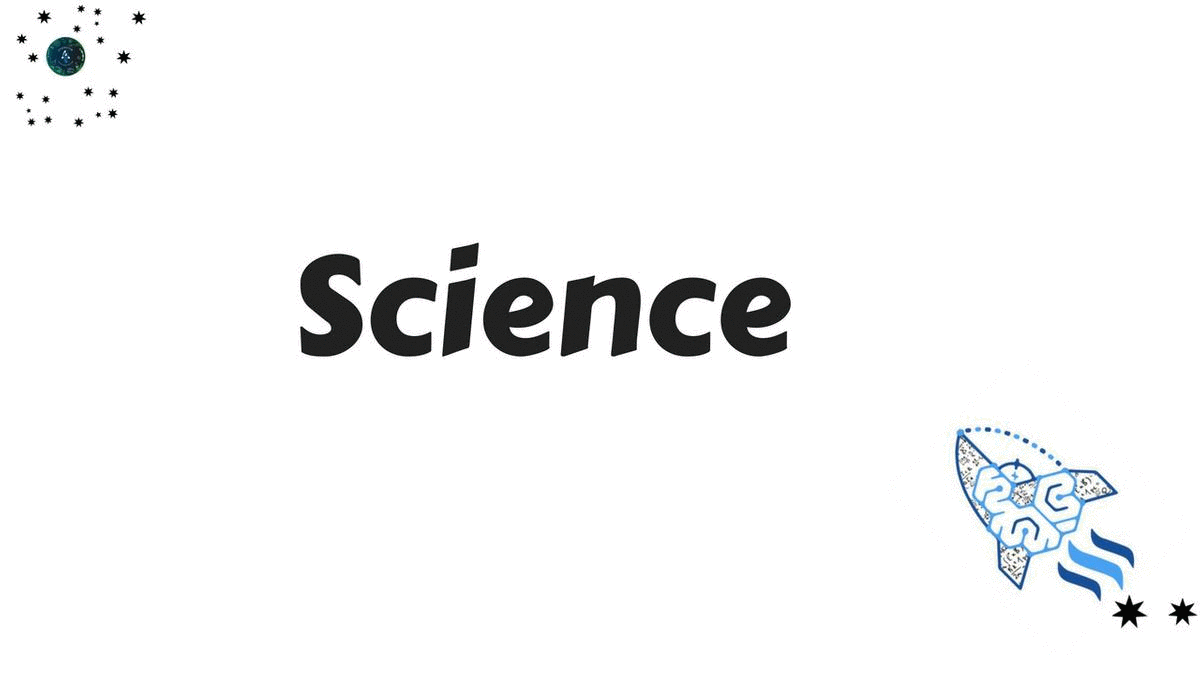

I upvoted your post.
Best regards,
@Council
Posted using https://Steeming.com condenser site.
Congratulations @teemike! You have completed the following achievement on the Steem blockchain and have been rewarded with new badge(s) :
Click on the badge to view your Board of Honor.
If you no longer want to receive notifications, reply to this comment with the word
STOPThis post has been voted on by the steemstem curation team and voting trail.
There is more to SteemSTEM than just writing posts, check here for some more tips on being a community member. You can also join our discord here to get to know the rest of the community!
Congratulations @teemike! You received a personal award!
You can view your badges on your Steem Board and compare to others on the Steem Ranking
Vote for @Steemitboard as a witness to get one more award and increased upvotes!